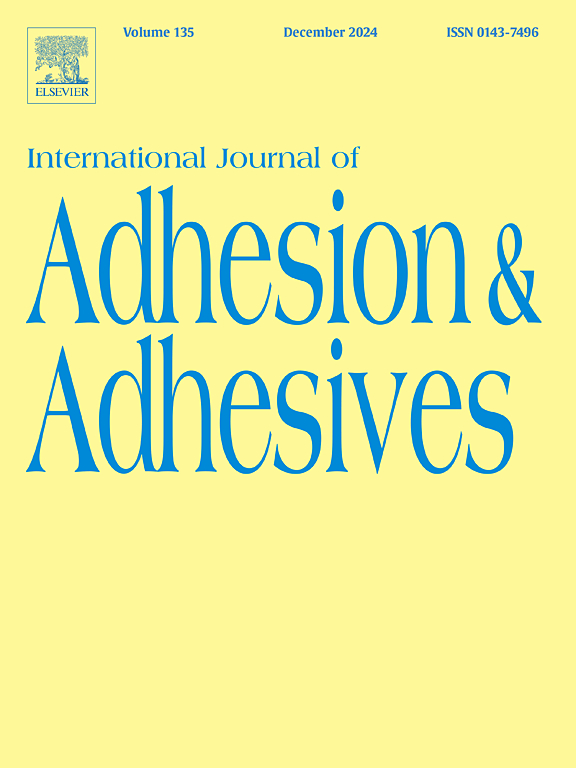The effect of crosslinking strategies on the performance of fluorinated core-shell waterborne acrylate pressure sensitive adhesives
IF 3.2
3区 材料科学
Q2 ENGINEERING, CHEMICAL
International Journal of Adhesion and Adhesives
Pub Date : 2025-03-18
DOI:10.1016/j.ijadhadh.2025.104016
引用次数: 0
Abstract
This study focuses on the development of high-performance core-shell acrylate latex pressure sensitive adhesives (PSAs) through fluorination and different crosslinking strategies (core-phase and shell-phase crosslinking). The latex was synthesized via a semi-continuous emulsion polymerization process, using (meth)acrylate monomers as the primary components, along with self-crosslinking monomers of acrylic acid (AA) and 2-hydroxyethyl acrylate (HEA) and the fluorinated monomer of hexafluorobutyl methacrylate (HFMA). During emulsion polymerization, 2–8 wt% ethylene glycol dimethacrylate (EGDMA) (based on total monomers) was introduced into either the core or shell phase to produce a series of fluorinated latexes with varying degrees of crosslinking. A comprehensive evaluation of the latex films was performed using FTIR, XPS, DSC, and TGA, with a focus on surface chemical composition and adhesive properties. The results demonstrate that only introducing EGDMA into the core phase can effectively immobilize fluorinated groups on the film surface. Moreover, the crosslinking strategies allow for precise control over the surface functional groups, tack, and peel strength of the latex films, offering great potential for tailored adhesive performance.
交联策略对氟化核壳水性丙烯酸酯压敏胶性能的影响
本研究主要通过氟化和不同的交联策略(核相交联和壳相交联)来开发高性能核-壳丙烯酸酯乳胶压敏胶(psa)。以(甲基)丙烯酸酯单体为主要组分,以丙烯酸(AA)和丙烯酸2-羟乙酯(HEA)自交联单体和氟化单体甲基丙烯酸六氟丁酯(HFMA)为主要组分,采用半连续乳液聚合工艺合成乳胶。在乳液聚合过程中,将2 - 8wt %的乙二醇二甲基丙烯酸酯(EGDMA)(以总单体为基础)引入核相或壳相,生成一系列不同交联程度的氟化乳胶。利用FTIR、XPS、DSC和TGA对胶乳膜进行了综合评价,重点研究了胶乳膜的表面化学成分和粘附性能。结果表明,在核心相中引入EGDMA可以有效地固定膜表面的氟化基团。此外,交联策略可以精确控制乳胶膜的表面官能团、粘性和剥离强度,为定制粘合剂性能提供了巨大的潜力。
本文章由计算机程序翻译,如有差异,请以英文原文为准。
求助全文
约1分钟内获得全文
求助全文
来源期刊

International Journal of Adhesion and Adhesives
工程技术-材料科学:综合
CiteScore
6.90
自引率
8.80%
发文量
200
审稿时长
8.3 months
期刊介绍:
The International Journal of Adhesion and Adhesives draws together the many aspects of the science and technology of adhesive materials, from fundamental research and development work to industrial applications. Subject areas covered include: interfacial interactions, surface chemistry, methods of testing, accumulation of test data on physical and mechanical properties, environmental effects, new adhesive materials, sealants, design of bonded joints, and manufacturing technology.
 求助内容:
求助内容: 应助结果提醒方式:
应助结果提醒方式:


